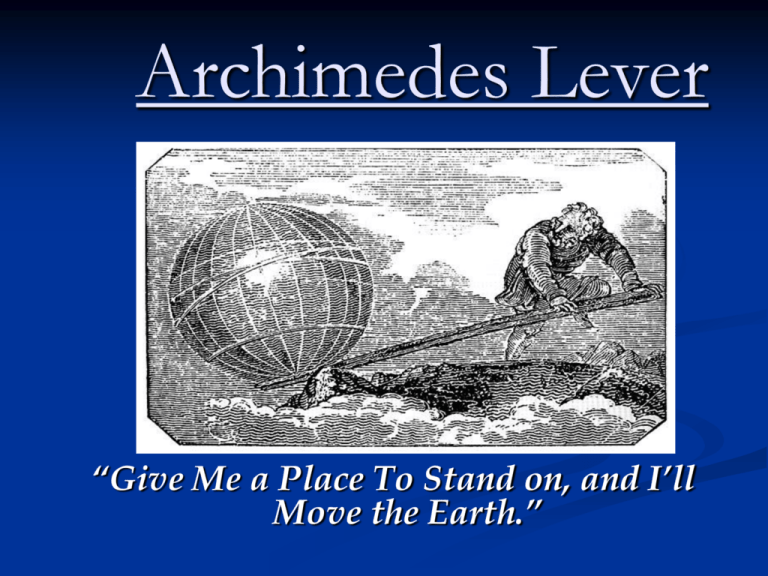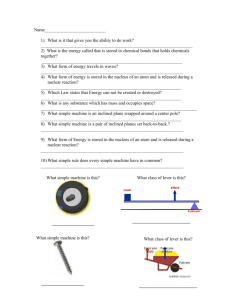Click to view
advertisement

Archimedes Lever “Give Me a Place To Stand on, and I’ll Move the Earth.” Who Was Archimedes? Archimedes of Syracuse was a Greek mathematician, astronomer, philosopher, physicist and engineer. Archimedes spent some of his early years in Egypt, but he resided for most of his life in Syracuse, the principal city-state in Sicily. All of his known works were of a theoretical character, nevertheless his interest in mechanics deeply influenced his mathematical thinking. He was not only a great ancient Greek mathematician, but he was also famous for his inventions such as a water pump, levers and pulley, and fire mirrors. He spent most of his life working on solving new problems. Sometimes he became so involved in his work that he forgot to eat. Many of his inventions and physical science discoveries were the result of challenges and problems posed by King Hieron. Archimedes also played an important role in the defense of Syracuse against the siege laid by the Romans in 213 BC by constructing war machines so effective that they long delayed the capture of the city. Archimedes was killed when the Romans overran his city. Archimedes was killed by a Roman soldier during the sack of the city. The Law of The Lever According to Archimedes: "Magnitudes are in equilibrium at distances reciprocally proportional to their weight.“ Why is it that small forces can move great weights by means of a lever? For surely the smaller weight is easier to move, and it is smaller without the lever. Is the lever the reason, being equivalent to a beam with a cord attached below, and divided into two equal parts? The fulcrum acts as the attached cord : for both these remain stationary, and act as a center. There are three elements in the lever: The fulcrum, that is the cord or centre. The two weights, the one which causes the movement, and the one that is moved : now the ratio of the weight moved to the weight moving it is the inverse ratio of the distances from the centre. The greater the distance from the fulcrum, the more easily it will move. The point further from the centre describes the greater circle. By the use of the same force, when the motive force is farther from the lever, it will cause a greater movement. A Lever In Detail The diagram shows a lever in work. You will notice side "A" is equal to side "B". Or the input force equals the output force. But notice that side "B" is longer than side "A". Therefore the output force will be larger. This is a ratio of output force to input force called mechanical advantage. This is why we can change a tire on a car by ourselves. With very little input force we can raise the car to change the tire. (output force.) Example Suppose you want to lift up a box that weights 200 pounds. If you use a lever with the distance from the pivot point or fulcrum F to the weight RA =1 foot and the other distance EA = 10 feet, then you would only have to push down at E with 20 pounds of force. This is because the rule tell us that E * EA = R * RA. In other words, 20 pounds times 10 feet = 200 pounds times 1 foot. Although you have what they call a mechanical advantage in being able to lift this heavy weight, you are actually doing the same amount of work, because you have to push the 20 pound force 10 times as far as the 200 pound box moves. For example, if you want to push the box 3 inches, you need to the 20 pound force for 30 inches. Since Work is Force times Distance, then you can see that: 20 pounds x 30 inches = 200 pounds x 3 inches.







